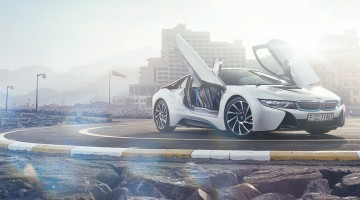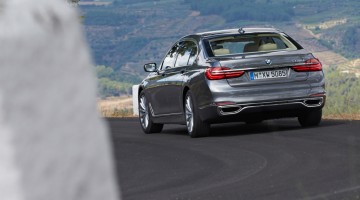The new BMW X5. Yawn. Right? Well, no.
[Not a valid template]I can’t honestly say that I was particular excited about this assignment. It’s a new BMW X5, it’s one of the world’s most popular SUVs, I’m sure it’ll be worthy and mums will like it and yadda yadda yadda. I’m basically killing time until the next sports car arrives at the office.
But do you know what? The latest version of BMW’s original SUV is actually rather good – not just in a practical, well-made sense, but in an exciting-to-drive, surprisingly-fun kind of way.
The story so far – BMW launched the first generation X5 back in 1999, and it was something of a revolution, bringing German premium quality to a market that didn’t really have anything else sitting in a similar position – it was either top-of-the-range Range Rover, or agricultural load-luggers some of which had a premium badge thrown on them. The X5 brought car-like quality and tech to the SUV market and shook everything up, and since then has sold more than a million across the globe. This new version is the third generation, and it has big shoes to fill.
Our test car is the top-of-the-range and clumsily-named X5 50i M Sport Adaptive Suspension model, which as the name suggests has some clever dampers under the surface. More on that later. The X5 50i gets a twin-turbo, 4.4-litre V8 under the bonnet, sending 444bhp to all four wheels through an eight-speed automatic gearbox.
Looks-wise, the new model is an understandable evolution of the second-generation X5, but it’s handsomely contemporary – like a reinterpretation of the original idea, rather than just a few bits and pieces tidied up on the old model. However, underneath the new suit there’s quite a bit of similarity to the old model, albeit with weight-saving measures like an aluminium bonnet and plastic panels.
The interior is… well, it’s fine. It’s got everything you need, it’s put together nicely and the materials are suitably premium. It’s just not very interesting, especially when compared to the living room-like Range Rover. There’s no sense of occasion to the design; it’s like climbing into an office. Still, the seats are comfortable and electrically adjust in about a million different ways, and I like the big wide screen in the centre of the dash, controlled by the now-familiar iDrive dial by the armrest. The steering wheel is thick and leather-lined, with a little M badge at the bottom to remind you of this particular model’s sporting pretensions. More M badges adorn the door sills and exterior too.
This isn’t an M car, but there is justification to BMW’s use of its hallowed letter here. For a car this size and weight, the X5 is really good fun to drive. The adaptive suspension can be controlled by the driver, by putting the car in Comfort, Sport or Sport+ mode. Even on Comfort it’s quite stiff, but with a weird elastic-like feel to the dampers when going over bumps that takes most of the sting out of would-be jolts. It’s when you start moving the X5 about that it really begins to impress. Despite its weight – more than two tonnes – the nose is agile and willing, the steering communicative and body roll minimal. It’ll drive into corners and, with the X5 set up by default to send 60 percent of torque to the rear wheels, it’ll lean towards oversteer, which is most conducive to fun through the bends, especially with the relaxed ESC settings. And yet, grip is impressive all round – it’ll really hang on through even the tightest corners, and in Sport+ mode it’s impressively composed. Even with that high centre of gravity it recovers from a quick change of direction almost instantly. The gearbox adds to the sporty feel – it’s superfast and smooth, and the paddles behind the steering wheel are suitably chunky. Once you’re through the corner, 444bhp and 479lb ft means the X5 really shifts, with meaty, full-blooded acceleration. From standstill it’ll hit 100kph in five seconds dead.
We didn’t get the chance to try the X5 off-road, but despite the presence of hill descent control it’s not got the levels of gadgetry of some of its rivals, so its on-sand capability is likely to be more of a token effort. There’s no low ratio or different terrain settings, but when you can have this much fun on-road, why would you want to stray?
Critics might mention that perhaps the X5 has a little less every-day refinement than its rivals – road and wind-noise are slightly higher than we’d hope for, and it lacks the wafting ride of something like a Range Rover. But without testing them side-by-side, neither are issues that particularly grated. What’s stayed with me after this short test is how much unexpected fun I had in the new X5, and what a welcome surprise that was.
| BMW | X5 50i |
|---|---|
| Engine: | V8, 5395cc, twin-turbo |
| Power: | 444bhp @ 5500-6000rpm |
| Torque: | 479lb ft @ 2000-4500rpm |
| Transmission: | Eight-speed automatic, all-wheel drive |
| 0-100kph: | 5.0sec |
| Top speed: | 250kph |



